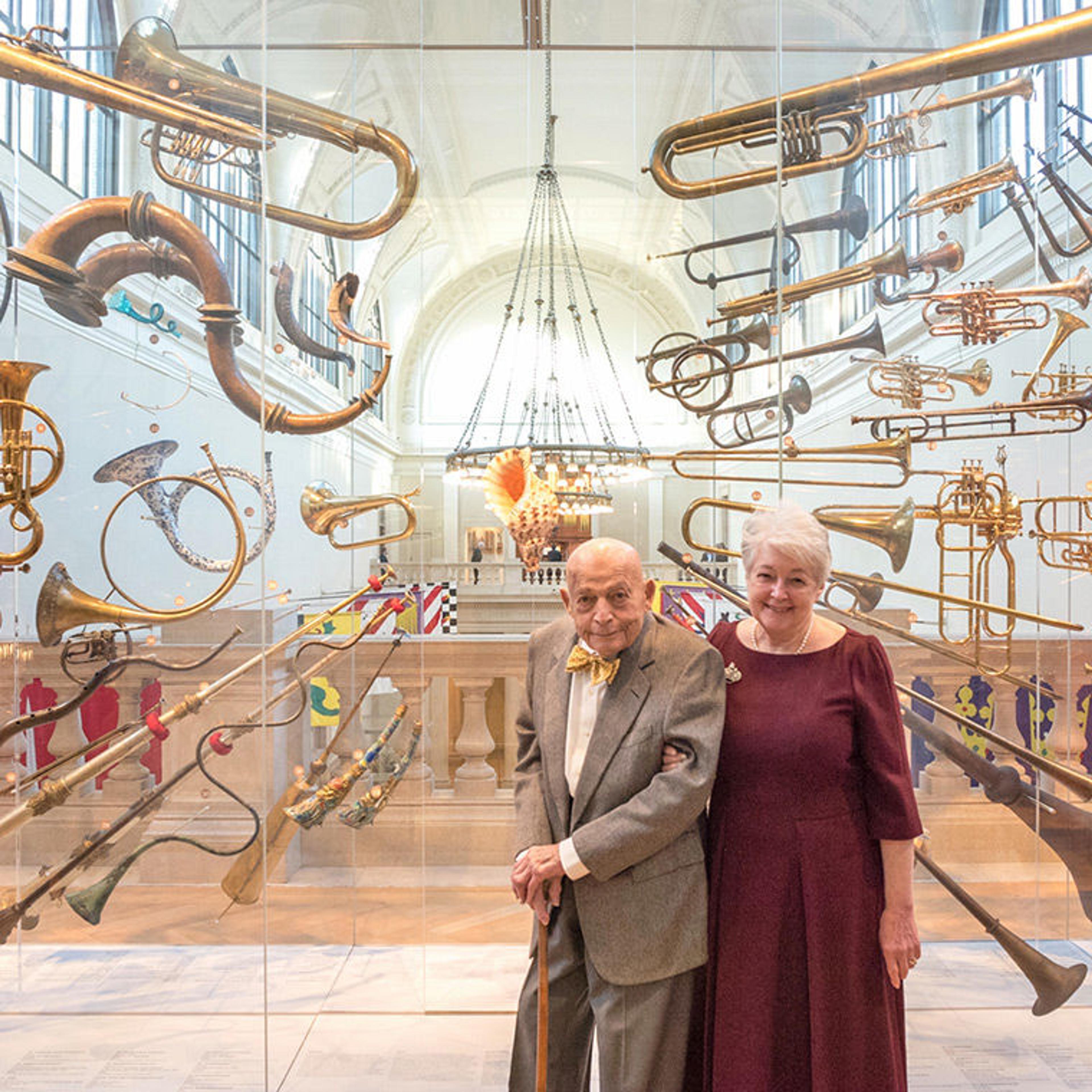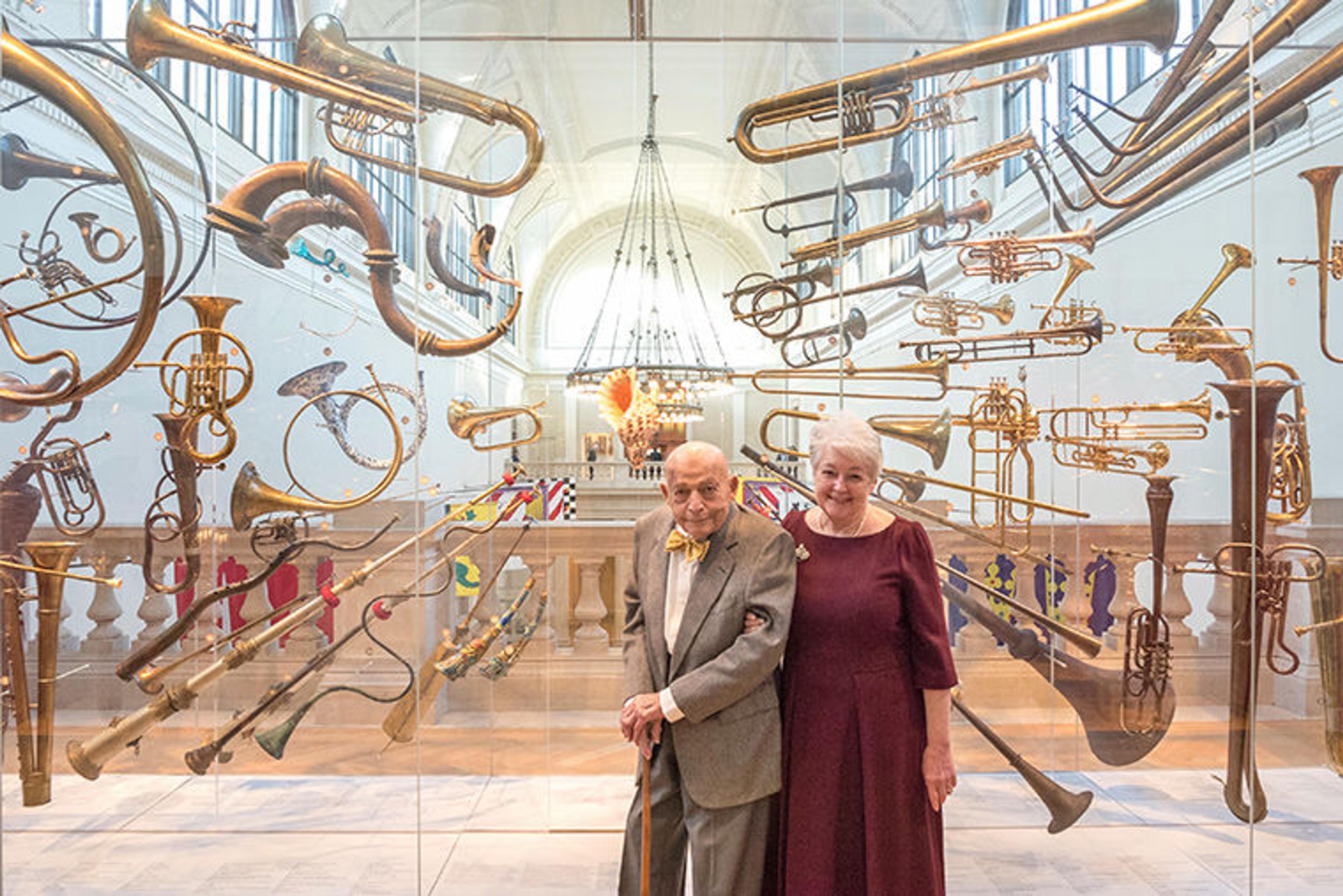
Eli Schonberger and Gail Guillet, the funders of the Fanfare installation in gallery 680. Photo by Christine Butler. All subsequent photos by the author
It was easy enough to imagine in the mind's eye: an exuberant installation of brass instruments representing the fundamental power of music around the world seemed like a perfect way to herald our newly reopened galleries and welcome visitors to The Art of Music. However, making Fanfare a reality was only possible because of the specialist knowledge, skills, and creativity of an incredible range of colleagues from across the Museum. A staff with capabilities nearly as encyclopedic as our collections makes The Met a singularly inspiring and extraordinary place to work and to experience art. Here is a backstage glimpse of how the many hands and processes hidden from public view have worked in concert to create Fanfare, from concept to completion. Watch it unfold in the time-lapse film at the end of this article.
The Challenge
Visible from several galleries and serving as the main entrance to the Musical Instruments galleries, the south balcony that overlooks the Arms and Armor Court is one of our most commanding spaces. The streaming sunlight that is so inviting to people also makes this balcony one of our most challenging spaces, since the high light levels severely limit the materials that can be safely displayed here. Installation work is always a marriage of the profound and the practical. What could we present here that represents musical traditions worldwide, expresses the artistry of instrument making, and can safely dazzle in the sunlight? Brass instruments!
The Concept
Fanfare was conceived as the signature installation of our Art of Music galleries, which explore four thousand years of instruments, art, and music making around the world. As such, Fanfare is global throughout time and place and celebrates the artistry of instrument making and design. We drew the concept and the layout of the installation from the idea of a fanfare, both as a piece of music that announces someone or something important, and as the visually striking ensemble of musicians who perform it. The central conch from which all the other instruments radiate outwards represents the earliest form of so called "brass" (or lip-vibrated) instruments and their enduring power around the world.
Design
Initial design work on Fanfare took the form of a series of 3-D maquettes that could be manipulated to visualize the overall size and configuration of the installation and explore how the instruments would relate to each other in a display visible from all sides. Fanfare is punctuated with pairs and small groups of instruments that explore cross-cultural and chronological juxtapositions. We focused first on placing these groups and finding the right spots for instruments with particularly strong visual properties. Those with intricate details such as engraving or decoration were situated at eye level while larger instruments that are most striking because of their overall form were often located higher or lower in the case.
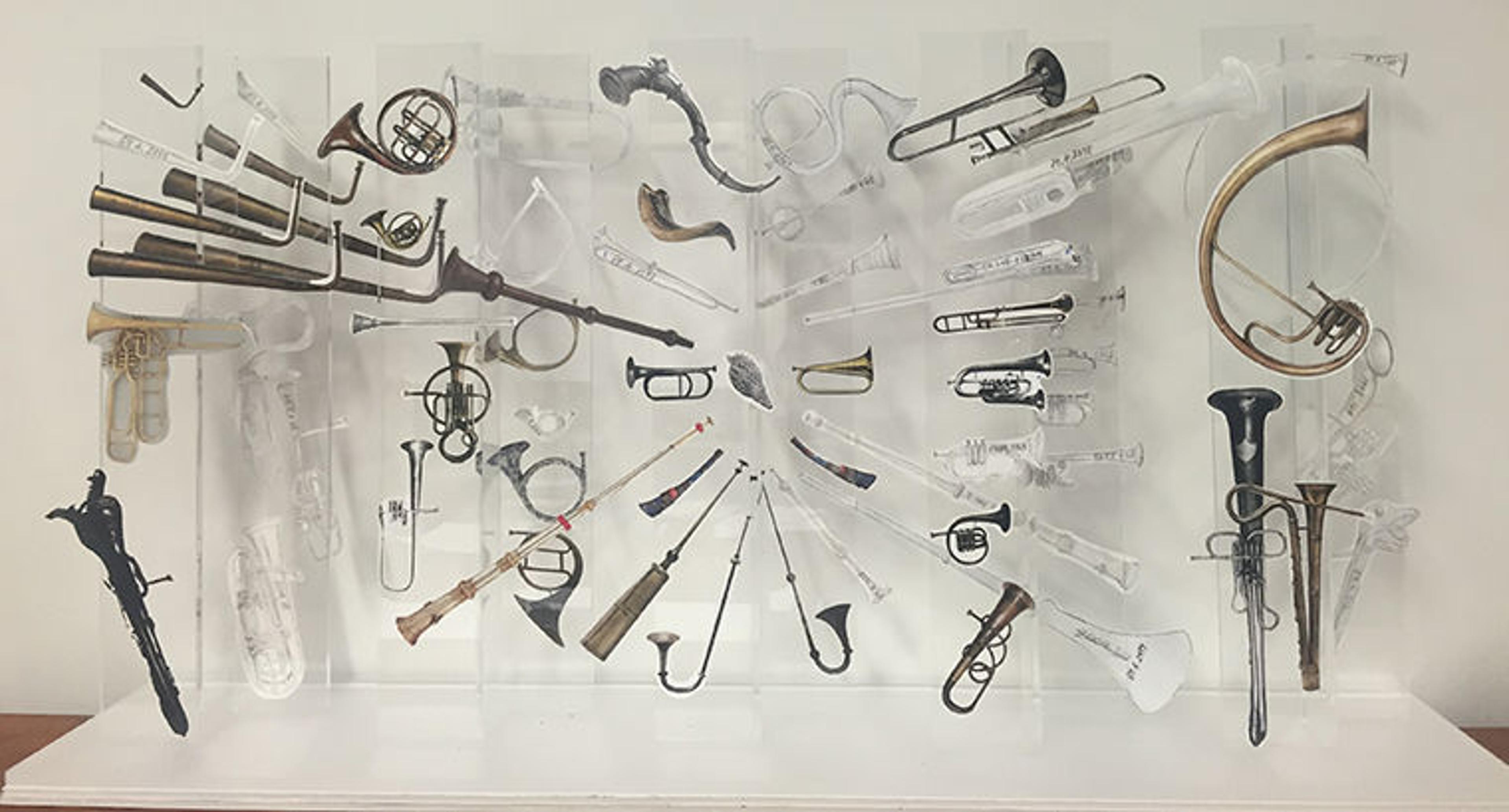
A 1:12 scale maquette of Fanfare
We were keen to create an installation that resonated with the light-filled space of the balcony, enabled the instruments to be seen from all angles, and did not suggest a front or back side. Ideally, the instruments would appear to be floating. Dialogues with the Museum's trade shops, exhibitions staff, and designers generated a range of possibilities to achieve this. Several systems for mounting the instruments within the case were prototyped, and a set of acrylic panels ultimately provided the stability and transparency needed.
Mount Making and Conservation
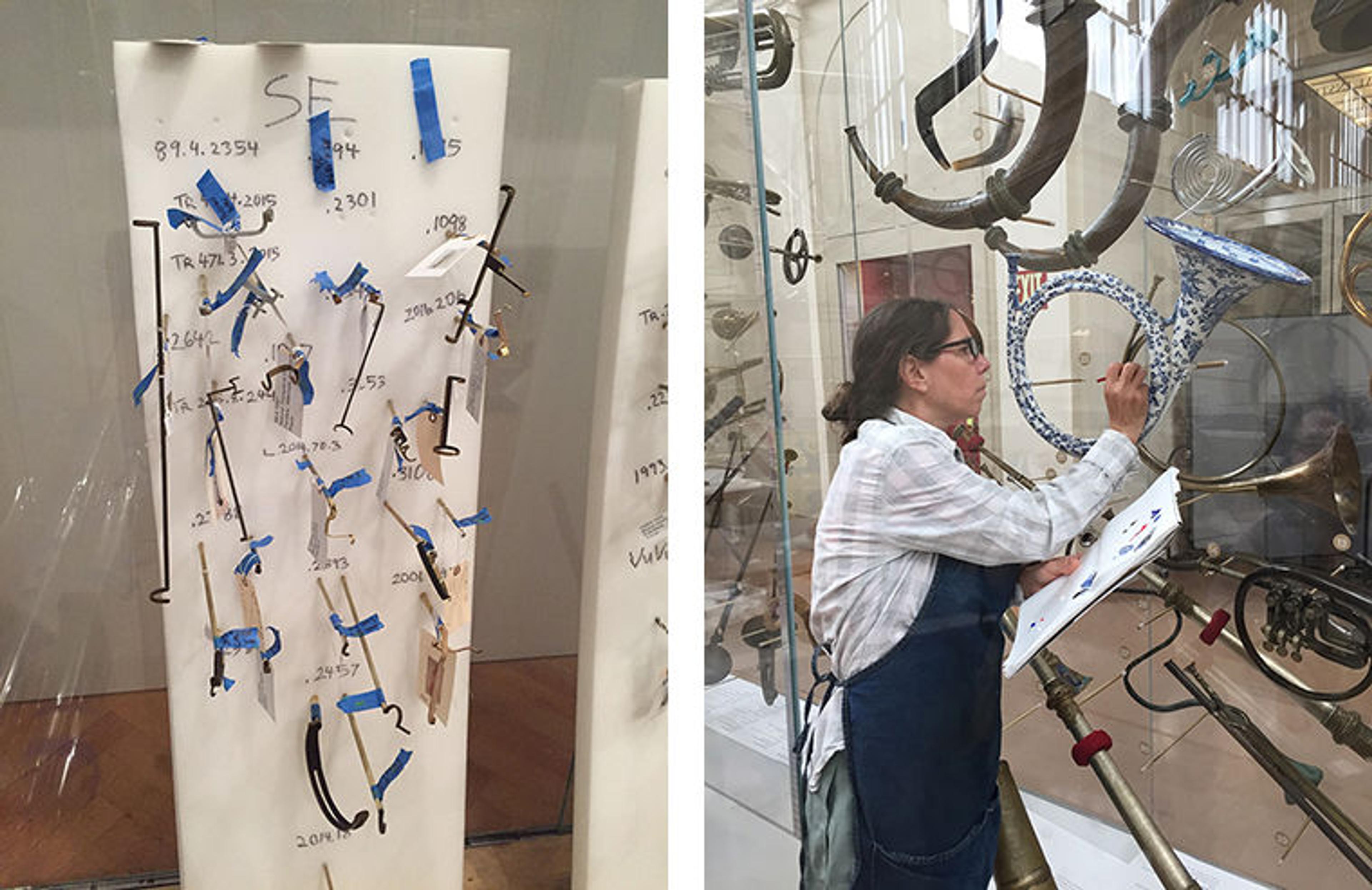
Left: Mounts awaiting installation in the Fanfare case. Right: Preparator Jody Hanson paints the mount she made for the ceramic horn so that it blends in with the instrument's decoration
Each instrument is held in place by bespoke brass mounts drilled into acrylic panels. All mount making for the Musical Instruments galleries was carried out in-house by our team of specialist preparators. This essential element in the art of display demands a balance between safely supporting an object and working to present it in a dynamic manner as unobtrusively as possible. Preparators, conservators, and curators engaged in a collaborative dialogue throughout the process.
Our conservators reviewed each instrument being considered for Fanfare, advised on its suitability for display, carried out cleaning and stabilization work, and consulted on the design of the showcase to create the best possible display environment. Although there are a number of "brass" instruments in The Met Collection made from organic materials such as ivory, bark, wood, and leather that would have been strong candidates thematically and visually, the high light levels on the balcony militated against including them in the installation.
Mockup

The mockup with paper templates in place
Fanfare became a tangible reality when the Museum's machine shop constructed a large steel frame to hold a set of acrylic panels in an adjacent gallery so that we could carry out a full-size mockup of the installation. This enabled us to understand how the actual instruments would be seen in such a visually revealing display and to fine-tune their placement, calling into play the keen eye and technical skills of the installer. The rough location of each instrument was determined by using full-size paper cutouts that could be easily repositioned on the panels. Once the final placement of these cutouts was determined, they were used as templates for installing the instruments. Because of their complicated three-dimensional forms, the instruments read differently from the paper templates. The mockup allowed mounts to be removed and repositioned until the best placement for each instrument was found, resulting in far more holes for mounts being drilled than were needed. It also enabled us to work and maneuver outside the cramped confines of a showcase. Once all placements were determined, the final holes were identified. All instruments and mounts were removed from the mockup and the location of the final holes was marked on Mylar templates. New sheets of acrylic were set up in the mockup frame and the locations of the final holes were transferred and drilled.
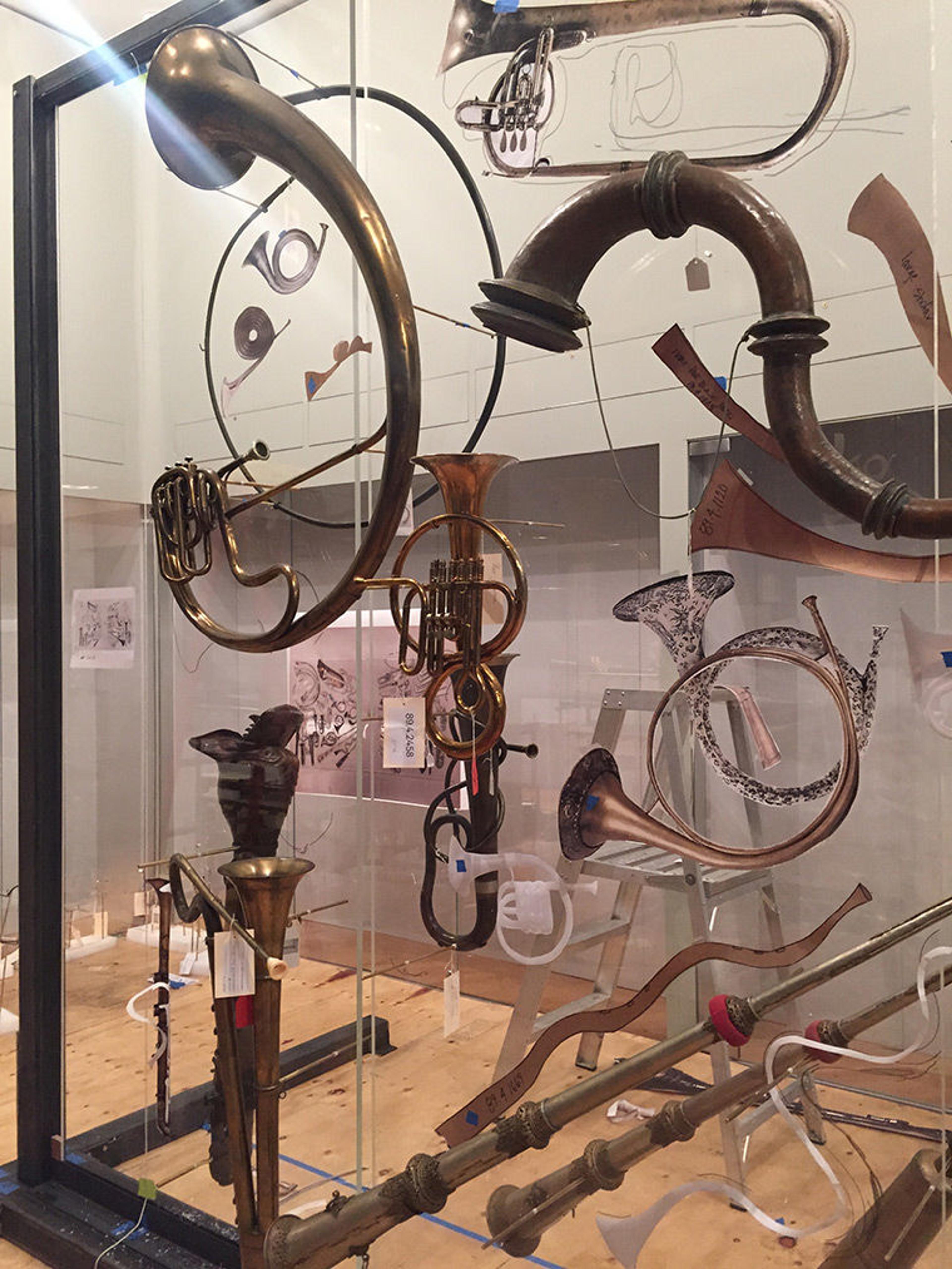
Close-up view of the mockup with paper templates and instruments
Building the Showcase
The gossamer appearance of the showcase is key to the aesthetics of Fanfare. The use of self-supporting structural glass without any metal supports enables the case to be as invisible as possible. Because of its large size (twenty feet long by ten feet tall by four feet wide), it was constructed on site in its final position on the balcony by a team of case makers from Germany. The drilled acrylic panels, each weighing 250 pounds, were positioned in the showcase by our riggers, The Met's specialist team that moves heavy, complex objects within the Museum.
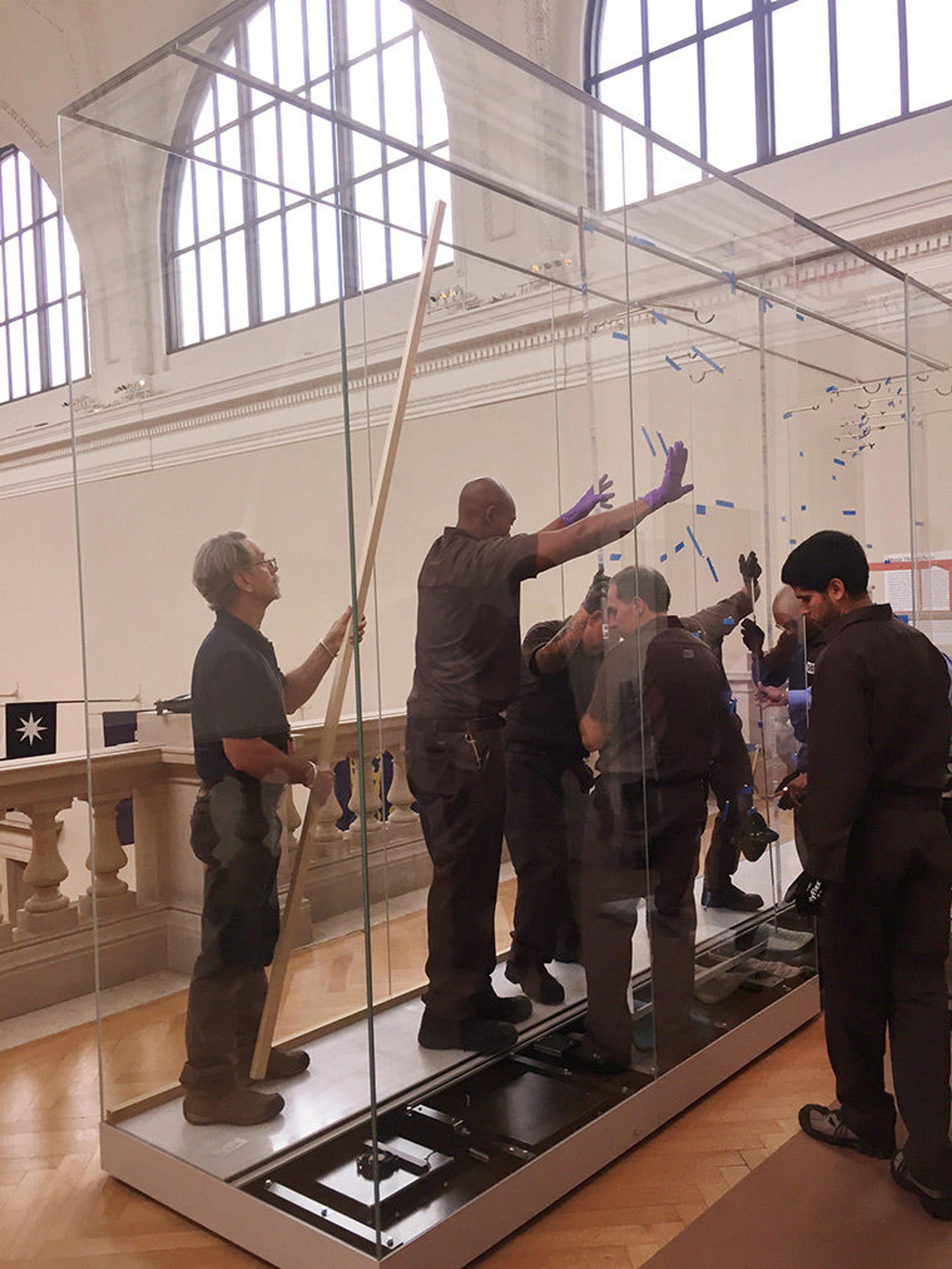
The riggers installing the acrylic panels in the case
The Installation
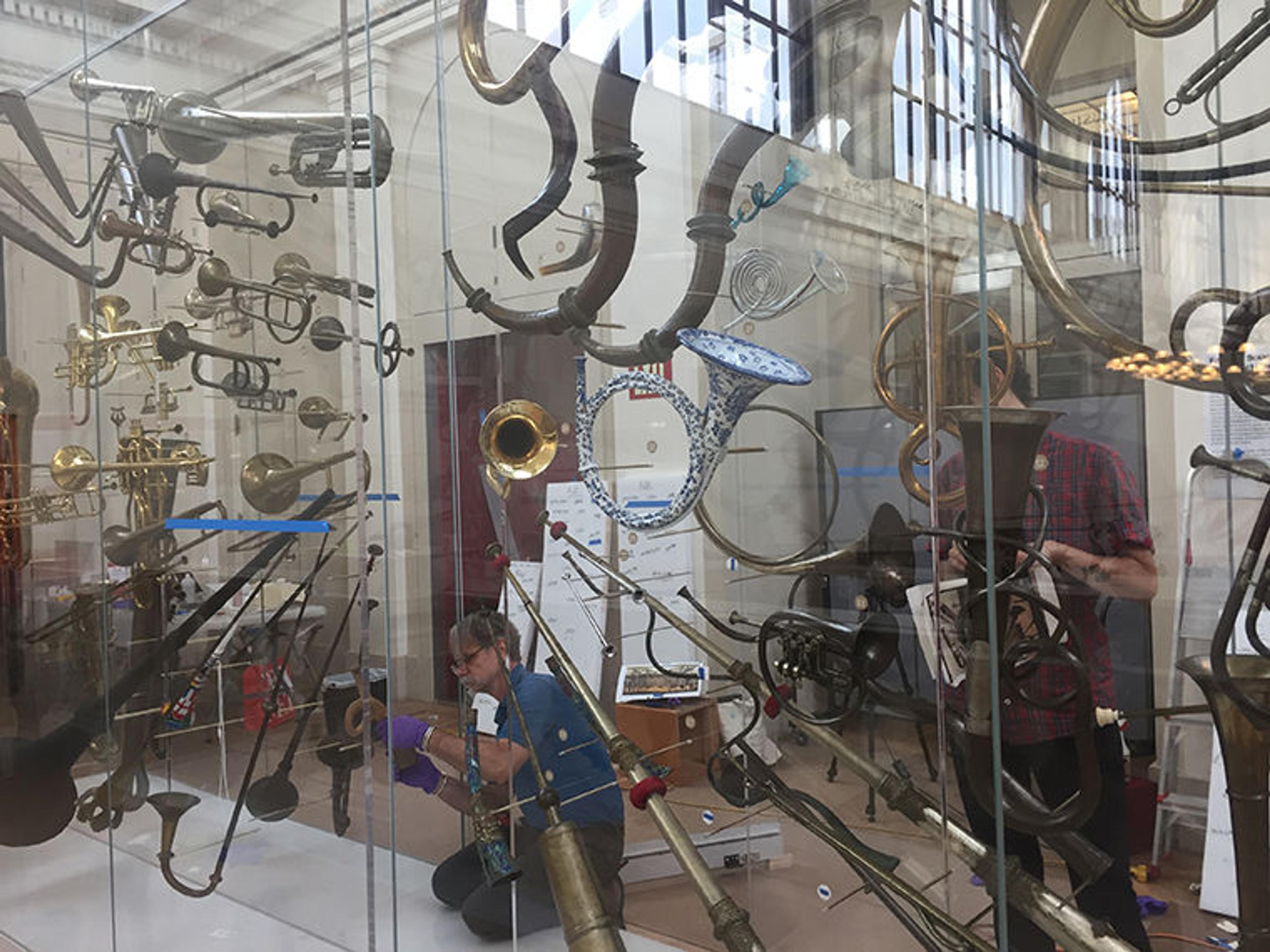
Tim Caster installs the last instrument to complete Fanfare
Each mount was put in its place on the prepared panels. The tight working space within the showcase required careful planning of the installation order. The graphic design team, which had worked extensively to develop a logical, legible, and elegant system for identifying each instrument, worked to position numbers and labels in the case. Because all design and instrument-mounting logistics were extensively trialed and finalized during the mock up phase of the project, the actual installation of instruments in the case proceeded in a surprisingly short two and a half days—although not quite as quickly as this time-lapse film below would make it appear!
By definition, a fanfare is an ensemble endeavor and thanks are due to colleagues across the Museum who made the installation possible, including: Tim Caster, who installed Fanfare and was my principal collaborator for the project; Jayson Kerr Dobney and the Department of Musical Instruments; Jody Hanson, principal preparator for Fanfare; Dan Kershaw, Chelsea Amato and the Design Department; Clint Coller, Richard Lichte, and the lighting design team; Luisa Ricardo-Herrera and the Construction Department; Manu Frederickx, Jen Schnitker, and the Department of Objects Conservation; Taylor Miller, Maria Nicolino, and the exhibitions staff; Peter Zeray, Wilson Santiago, Thomas Ling, and the Imaging Department; Sean Thomas and the Plexi Shop, Mirek Mackiewicz, Marcel Abbensetts, and the Steel Shop; Matthew Lytle and the Carpentry Shop; Crayton Sohan and the team of riggers.
